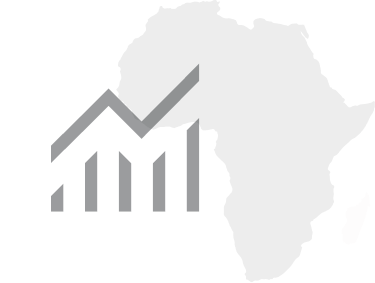Ghana, 61 years after independence: challenges and prospects
13 March, 2018
The opinions expressed in this article are solely those of the author, and do not necessarily reflect the opinions or views of the Mo Ibrahim Foundation.
Last week, Ghana celebrated 61 years of independence from British rule. On 6 March 1957, Ghana’s founding president, Dr Kwame Nkrumah, declared: “at long last, Ghana your beloved country is free forever” to the excitement of men, women and children gathered at the old Polo grounds in Accra. However, over six decades on, has Ghana lived up to her name as the 'black star of Africa'?
A thriving democracy?
The first three and half decades of Ghana’s independence have been characterised by short-lived civilian governments interspaced with military regimes. However, the story has been different since the return to democratic rule in 1992. From 1992 to 2016, Ghana has organised seven general elections in which power has alternated three times between the two main political parties. For many, Ghana is now a beacon of thriving democracy for the continent, where democratic institutions are consolidated, human rights are widely respected, and the media and civil society operate without state interference.
In sum, Ghana’s credentials in organising elections and ensuring smooth transitions of power cannot be underestimated. However, Ghana’s democracy is not perfect, and challenges remain.
Overall Governance has been on the decline in the past few years in Ghana. The 2017 Ibrahim Index of African Governance (IIAG), shows that although Ghana remains among the ten top scoring countries on the continent, it is also among the ten most deteriorated countries over the last decade.

A demographic bulge
In 1957, Ghana’s population was estimated at over 6.0 million. Six decades later, the population has almost quintupled to approximately 29.0 million in 2017. By 2035, Ghana’s population will surpass 40.0 million. Currently, more than half of Ghana’s population (58.5%) is below the age of 25.
This growth in population has not been matched by an equal investment to transform it into a demographic dividend – both in education and employment.
Close to half a million children of primary school enrolment age are not enrolled. In September 2017, Ghana implemented a policy to make public education at the secondary level free and accessible to all. As a result, 90,000 children who would have otherwise dropped out of school were enrolled under the program. The implementation and roll-out will take some time before the full effect and impact on the overall quality of education delivered is seen or felt.
Of Ghanaian 15-24 year-olds, 11.1% are not in employment, education or training. Only 10.0% of graduates get a job within the first year of their completion, and it could take up to a decade for graduates leaving school to get employed. In total, 5.1% of 15-24 year-olds who are part of the labour force in Ghana are unemployed.
Unemployment and lack of opportunities can lead to brain drain
According to a 2017 Afrobarometer survey, four in ten Ghanaians (41.0%) have considered leaving the country. Similarly, the 2017 Ibrahim Forum Report also observed that 50.0% of tertiary educated people in Ghana leave the country annually.
There is no doubt Ghana’s future is hinged on the opportunities that will be created for young people in the next few years. The country stands at a tipping point and failure to meet the growing demands of the youthful population may become a 'toxic brew'.
A colonial economy
Economically, Ghana has been largely agrarian with heavy dependence on cocoa, gold and, more recently, oil. In 1957, agriculture accounted for 51.1% of Ghana’s GDP and 61.8% source of employment for the country’s labour force. Yet, while the sector in 2016 employed about 44.0% of the labour force, in the same year its contribution to the GDP decreased to about 18.9%. According to 2016 estimations, half a billion dollars is spent annually to import rice.
Ghana has had contracting GDP annual growth rate over the past few years, declining from 14.0% in 2011 to 3.6% in 2016. Since independence, Ghana has pleaded the IMF several times for a bailout. In the 2018 World Bank Doing Business index, Ghana ranks 120 out of 190 countries.
After 61 years of independence, Ghana’s economy has not seen enough structural transformation to propel it into an economic giant. It is claimed that Malaysia had its first oil palm seedlings from Ghana. In 2011, the palm oil industry was the fourth largest contributor to the Malaysian economy and provided 600,000 jobs. Meanwhile, Ghana has spent $150.0 million on the import of palm oil from Malaysia alone within the first nine months of 2017. This must be a call on policy makers to do more in transforming the structure of the economy.
Prospects
After 61 years of independence, important progress has been achieved, but there is potential for further reforms to strengthen Ghana’s democratic institutions. Many Ghanaians are yet to experience the economic liberation that comes with independence; youth unemployment remains a threat to the security of the country, and many young people feel that their dreams can only be achieved abroad. As long as opportunities and the enabling environments remain limited, the promises of independence will continue to be a mirage for many Ghanaians like myself.
Ultimately, Ghana’s future will be determined and shaped by visionary and accountable leadership. The onus, however, lies on young people to demand that leadership.
Reliable, accessible and trackable data play a fundamental role to monitor the progress of governments in delivering governance, and the IIAG offers a valuable tool for this.



